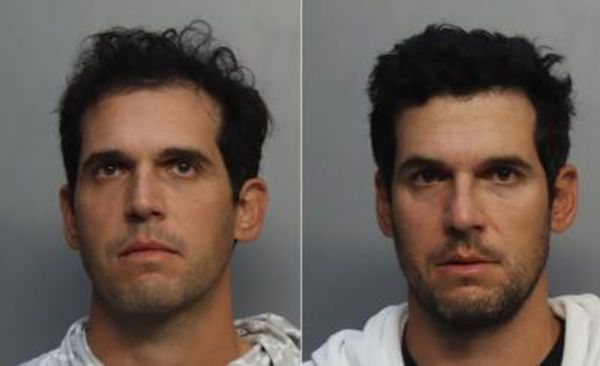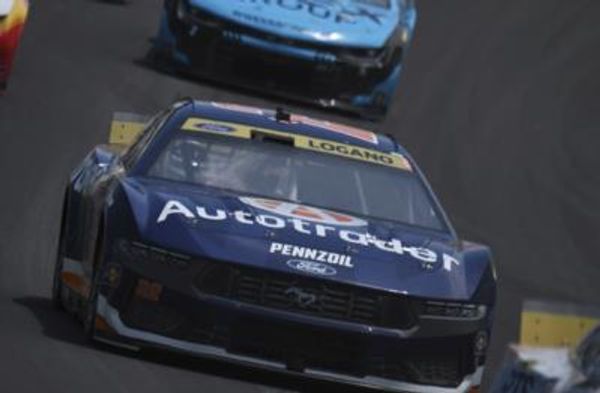
Ralph Doubell began running in the hope of seeing the world. Spindly, 17, scraping by at the University of Melbourne, Doubell figured he could travel for free, or at least on someone else's dime, if he made the national universities athletics team. Even getting as far as New Zealand for a track meet would be a start.
To improve his chances Doubell showed a glimpse of his soon-to-be famed fortitude by approaching the university's Svengali-like track and field coach, Franz Stampfl. The Austrian had an imposing aura, one accentuated by an apparent brusqueness, the toughness of his training regimens, and his extraordinary history. And when you discover it included war-time internment and surviving eight hours at sea after a German U-boat attack, it can make his coaching Roger Bannister to the four-minute mile in 1954 seem a mere footnote.
Stampfl also had a reputation for eccentricity. He often wore a monocle and, like his great rival (and fellow eccentric) Percy Cerutty – Herb Elliott's leather-skinned, bare-footed, sand Spartan of a coach – he liked a tan. One former protégé recalls that the first time he saw him Stampfl was washing his car trackside during an athletics meet wearing only Speedos. They don't make coaches like that anymore.
The young Doubell, however, summoned the courage to ask Stampfl to train him, and Stampfl, who held court from a two-room fibro hut beside the university's running track, agreed to take him on. That was in 1962. Six years later in Mexico, Doubell kicked past Kenya's Wilson Kiprugut to win the 800m Olympic gold medal, equalling the world record. "There's no doubt in my mind," says Doubell, whose time of 1min 44.4sec still stands as the Australian 800m record, "that that wouldn't have happened without Franz. He just had a way of getting the best out of you."
Before his death in 1995, Stampfl would show, over a career of more than 50 years –during which time he coached thousands of athletes in Austria, Northern Ireland, England and Australia – that his "way" was holistic. The most easily observed component, however, involved a punishing regime of what became known as interval training.
When he began coaching in Austria in the 30s, Stampfl noted a prevailing attitude that only athletes without natural talent needed to train. But this confused Stampfl and ultimately he sought out a more scientific approach. Amid constant speed timing and pulse taking, he devised a training method in which athletes ran, again and again, over a set distance. The killer detail, however, was that each distance would be done at a faster speed than the one previous, while the recovery period in between would become progressively shorter.
At the time – well, even today – it was a tough ask. But the task came from a man who had endured considerable hardship, and you wonder if this gave him more license in his demands of his athletes. Stampfl, by the time he was invited to coach at Melbourne University in 1955, had an incredible back story during which he'd shown, time and again, not only his physical durability but his mental toughness, his ability to put adversity behind him and just get on with it. As he once told Sports Illustrated, "I discovered that physical hardships could be overcome if there was a burning desire from the mind to produce complete mental control."
One of seven children, Stampfl grew up in Vienna and at some point became interested in skiing, javelin and, after that, the science of coaching. It was during the 1936 Berlin Olympics that Stampfl began to contemplate leaving mainland Europe. "I went in 1936 to the Olympic Games in Berlin and I came back terribly worried what the future's going to be," said Stampfl, as quoted by ABC's Radio National. "In fact the Germans and Hitler in particular was extremely anxious to fete the Austrian team, and we had most marvellous time. But I saw the militarism and the brutality of it all at the time. And I made up my mind I will not stay in Austria, but leave and go over to England, and therefore all my ideas about athletics stopped at that time, until in 1938 when the Anschluss took place."
Stampfl went to the United Kingdom as an art student and he lived for a time in Chelsea with a group of Jewish artists. But Stampfl's goal was to coach so, after English sprinter Harold Abrahams (depicted in Chariots of Fire) vouched for him, he began training athletes as a freelancer, a shilling a head per day. After first working in Northern Ireland he returned to England after the second world war broke out. This is when Stampfl's life took some dramatic turns. Suspected of being a spy Stampfl said he was arrested by MI5 and sent to a prison in Wales before being put aboard the ship, the Arandora Star, for transfer to Canada for internment as an enemy alien. On 2 July, 1940, off the coast of Ireland, the ship was torpedoed by a German U-boat. Some 800 people were killed while Stampfl survived more than eight hours in the north Atlantic before being rescued.
Stampfl was later sent aboard the overcrowded and under-provisioned Dunera for transport to Australia and internment in Hay, a farming town in south-west New South Wales, then Tatura in country Victoria. When the war ended Stampfl was released and, after meeting his future wife Pat in Melbourne, he returned to Britain to continue where he left off. Some time after that he began coaching Christopher Brasher, who would win the 3,000m steeplechase at the 1956 Melbourne Olympics. And it was Brasher who, in about January 1954, introduced Chris Chataway and Bannister to Stampfl. Then, famously, on 6 May, at the Iffley Road track in Oxford, with Brasher and Chataway pacing him, Bannister conquered the then Everest of athletics.
Considering he had just four months with the mile team, how much credit can be apportioned to Stampfl? Chataway, who in October of the same year broke the 5,000m world record, believes that without Stampfl's efforts, Bannister would not have broken the four minute mile when he did. He says that perhaps Australia's John Landy – Bannister's great rival, who at time of Bannister's run was preparing an attempt on the record in Finland – would have got in first.
So what was it about Stampfl?
Before sports science and team psychologists came into vogue Stampfl was getting into the heads of his athletes. As he once joked, "Every Viennese believes he is another Freud." Accused by some of excessive verbosity – not that Stampfl ever paid his critics any heed; he was a man known for his dictatorial manner, and for always being right, "even when he was wrong," jokes Doubell – Stampfl could certainly wax lyrical. About poetry, art, the wisdom of the ancient Greeks, you name it, all the time looking to educate and inspire. "I sometimes think," he said, "that my ideal athlete would have the mind of a poet. He would be a man with rich imagination, capable of intensely feeling physical, mental and spiritual emotions."
Doubell recalls long post-training lunches with Stampfl on Lygon St in Melbourne's Carlton and, by 4pm, "feeling like I could beat anyone in the world." Chataway has similar memories. "I am sure, under Franz, the three of us were fitter and better trained than before, but the main thing was his ability to invest it with magic," says Chataway, now 82.
"[In the build up to the four minute mile attempt] we'd have these sessions with Franz once or twice a week, at a track on the Kings Road in Chelsea, and then afterwards we'd go and have supper and a bottle of wine in a restaurant nearby. And Franz would talk. And he was amazing. I would sometimes think, and I suspect the others would too, that I'd had enough of all this running. But say anything like that to Franz and there was a torrent of words. By the time he finished you would believe that if you could get a world record it would be as good as painting the Mona Lisa; that your place in world history would be secured. He was tremendous. He really had an ability to persuade such as I've never come across in anyone else."
But Stampfl could also listen, and with sympathy. He sought to get to know his athletes as well as he could. He asked about their family backgrounds, their childhoods, interests and passions – and if he didn't know much about them he'd study them. In short, as former Australian javelin champion Piero Sacchetta recalls, "he worked out what made you tick. The benefit was that he then knew what buttons to press for each individual athlete, to get the best out of them."
Stampfl's son Anton, a Sydney physicist, says Stampfl was an intense, loving father, a man interested in politics, cricket, painting, and the world of ideas; a man who was a potent debater who would often take up an opposing view whether he held it or not simply in order to promote a discussion. He also recalls, without bitterness, having to share his father with Stampfl's other family: his athletes. "He did what he wanted to do," says Anton. "He was extremely disciplined to a degree you wouldn't believe. He'd get up at 5.10am every weekday and have his breakfast, then he'd go down to the park and start his day. When he'd get back he'd watch the 7pm news, and Hawaii Five-0 if it was on—he loved that show—then, around 8.30pm he'd go to bed, often in the middle of a conversation. He was in another world, thinking about the next day."
Stampfl, who became an Australian citizen in 1956, had a structured, settled life until 1980 when fate proved again that it didn't have a sense of humour. In November of that year, while he was sitting in traffic on Punt Road Bridge, Stampfl's Triumph sports car was hit from behind by a young man racing another. Anton Stampfl remembers rushing to the Austin Hospital's spinal unit with his mother. Here was his father, a man of rigid self-discipline and teak toughness, laid out in a way he'd never seen before. He'd been told by medical staff his father would never walk again so Anton was torn between grief and revenge fantasies. But again his father's mental strength surfaced.
"My father heard me," says Anton. "He said, 'Anton, come here. Look at me.' Tears were streaming down my face. He said, 'Anton, you have a physics exam in the morning.' Can you believe it? 'Do your best. Don't worry about me.'"
A week later, during which time Stampfl no doubt entertained dark thoughts, he vowed to go on, to continue coaching. And that's just what he did, from a wheelchair. A year later he was awarded an MBE but Stampfl, who always felt under-appreciated by athletics officialdom (despite his success he was never asked to coach, in an official capacity, a national athletics team), remarked caustically that he had to break his back to get it.
If Sacchetta is taking some license in suggesting his "family of athletes" would have died for Stampfl – a family that, at the time, included Doubell, sprinter Hec Hogan, miler Merv Lincoln, shotputter Bev Francis, various alpine skiers and Fitzroy footballers – they showed what he meant to them after the accident, doing whatever they could to ferry him to and from training every day, as well as facilitate his access around Melbourne University and his home.
To them he was more than a coach, he was a father figure. And to Stampfl, coaching was not just a job, but a vocation. After the accident he knew he would no longer be able to show athletes what to do, to guide their movements with a telling touch here, an instructive demonstration there, but he acknowledged he still had his most powerful tool.
"As long as I have my voice," he said at the time, "I can coach."







